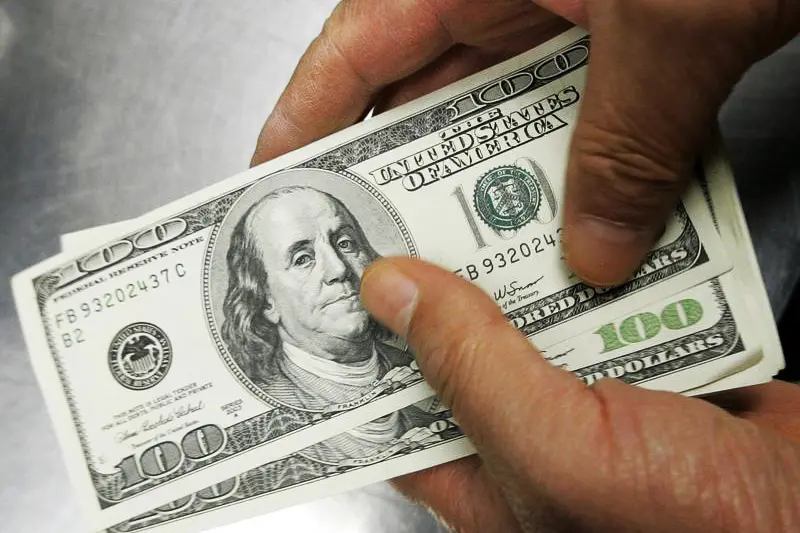PHOTO
LONDON - A June jamboree in central banking is being scratched from diaries as markets now suspect the Federal Reserve will drag its heels on a first interest rate cut by then and leave the European Central Bank to go solo.
And persistent stability in the transatlantic exchange rate despite that shift in policy thinking may well give the ECB heart to push ahead regardless - with euro/dollar still stuck bang in the middle of an 18-month-long eight cent range.
One of the most remarkable aspects of the global rates market during the first quarter was lock-step pricing on both the timing and extent of Fed and ECB credit easing this year despite vastly different underlying economic conditions.
While impressive disinflation over the past year in both the United States and euro zone has given both central banks an amber light to start rolling back the highest borrowing costs in over two decades, near recession in the euro zone contrasts with still-brisk U.S. expansion and a super-tight jobs market there.
A combination of another booming U.S payroll gain last month and stubborn new year inflation readings has seen many Fed officials dampen market hopes for a cut as soon as June - with some even suggesting any rate cuts this year may soon be off the agenda without more significant inflation improvement. Wednesday's consumer price update may bolster that view.
But as the ECB meets this Thursday, all the stars are still aligning for it to signal easing by midyear - with core inflation continuing to ebb there last month and a dour bank lending readout for the first quarter showing tight credit conditions biting hard.
"We will know a little more in April, but we will know a lot more in June," ECB boss Christine Lagarde said after the last meeting just over a month ago.
'PLAUSIBILITY RANGE'
AXA Group Chief Economist Gilles Moec reckons staggered rate moves are now a distinct possibility and the relatively nonchalant euro may be the key to encouraging that.
"That the ECB cuts before the Fed is absolutely within our 'plausibility range'," he wrote. "The euro exchange rate has barely softened despite a reversal in market expectations on policy rate differentials (and) this should embolden the ECB to take the right decisions for the euro area irrespective of what the Fed ultimately does."
Moec argues that the only channel by which Fed hesitation would have a bearing on the ECB going solo in June is via the exchange rate - where a dollar surge might see renewed pressure on dollar-priced imports and commodity prices for the bloc.
The fact that the euro/dollar rate barely budged over the past month puts that to one side.
At the start of this month, futures markets had fully priced in a quarter point rate cut by the Fed in June, but that's now been cut to just a 50-50 chance since. The ECB remains fully priced for a June move.
Chris Williamson at S&P Global Market Intelligence reckons talk of an earlier ECB move is justified by underlying momentum in both euro zone consumer price trends and price readings from regional purchasing managers surveys.
"The CPI and PMI data ... hint at the ECB being the first to see inflation hitting - and remaining below - target, with the U.S. lagging behind in the inflation battle."
SHUFFLING THE DECK
To be fair, juggling the dates of a first move may seem slightly academic. After all, even if money market traders have got cold feet about June, they still see a full quarter point easing by the end of July.
But it's shifts in the extent of the easing cycle ahead that are perhaps more significant. Only 63 basis points of Fed cuts are now penciled in for the remainder of this year but 85bps of ECB cuts are still nailed on.
Push it out further and the Fed's so-called 'terminal rate' captured by money market futures has crept back up close to 4.0% for early 2027 - almost a full percentage point higher than it was at the start of the year and implying the entire easing cycle may be just 150bps in total.
The equivalent ECB reading has 175bps already priced by the end of next year.
Further out still and the outperforming euro zone government bond market has seen the five-year Transatlantic yield gap widen by more than a quarter point since the beginning of last month to give the U.S. a nominal yield premium of more than 200bps for the first time this year.
In fact, that five-year yield premium has now more than doubled in just 12 months and euro/dollar is exactly where it was on April 10, 2023.
A green light for the ECB?
The opinions expressed here are those of the author, a columnist for Reuters.
(Editing by Emelia Sithole-Matarise)





















